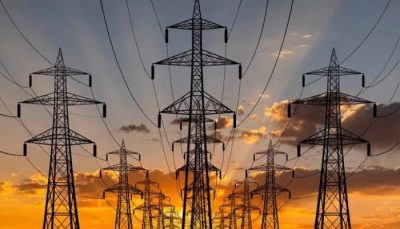
Nigeria’s electricity Distribution Companies (DisCos) are on track to match or surpass their 2024 revenue haul within the first five months of 2025, according to data compiled by BusinessDay.
Data sourced from the Nigerian Electricity Regulatory Commission (NERC) showed that between January and May 2025, DisCos collected N954.64 billion from customers, just 12 percent shy of the N1.08 trillion revenue recorded for the entire 2024.
The numbers have left many analysts and consumers puzzled, if not outraged. Power outages have worsened in 2025, crippling businesses, especially in the manufacturing and services sectors, and forcing households to rely increasingly on expensive alternative sources like diesel and petrol generators, solar panels, and inverters.
Yet, DisCos continue to post impressive collection figures in what appears to be an ecosystem where financial performance is increasingly divorced from service delivery.
The discrepancy between revenue and reliability highlights a deepening dysfunction in Nigeria’s power sector.
“This isn’t a case of improved efficiency or expanded service coverage,” said Aisha Mohammed, an energy analyst at the Lagos-based Centre for Development Studies. “It is a case of consumers paying more, sometimes blindly, for a service that is deteriorating. And it’s getting worse.”
According to NERC’s data, the near-trillion-naira collection in just five months was driven by a combination of factors: increased electricity tariffs, aggressive metering of previously unmetered customers, and more effective revenue collection mechanisms.
However, none of these necessarily translates to improved supply, reliability, or customer satisfaction.
In fact, many households and businesses argue they are paying more for less.
For instance, new tariff bands implemented earlier in the year mean that ‘Band A’ customers, those expected to get at least 20 hours of electricity daily, are now being charged up to N225/kWh. But multiple reports from those same customers suggest actual supply is often less than 12 hours, and sometimes just a few hours a day.
“In April and May, we barely had six to eight hours of electricity daily, yet our bills kept rising,” said Ifeanyi Uzodike, a small business owner in Nigeria’s commercial capital. “It’s either they’re billing arbitrarily or the meters are rigged. We’re paying for darkness.”
These complaints are not isolated. Across the country, consumer feedback has been overwhelmingly negative. From Lagos to Kano, from Enugu to Port Harcourt, customers report similar patterns of high billing, low supply, and negligible customer support.
Yet, the revenue numbers keep climbing.
The cumulative revenue collected by the DisCos from January to May 2025 stood at a staggering N957.97 billion. This figure was derived from the individual monthly collections: N178.68 billion in January, N191.75 billion in February, N188.89 billion in March, N199.85 billion in April, and N191.57 billion in May.
When juxtaposed against the total revenue collected in the entirety of 2024, which stood at N1.1 trillion, the current trajectory suggests that the DisCos could surpass last year’s figures well before the close of the third quarter.
Some industry insiders point to the relatively improved performance of DisCos in collections as a sign of growing administrative efficiency.
“They are getting better at collecting what is owed them, especially from large consumers, government agencies, and industries,” said an energy economist familiar with the sector.
“But that’s only one side of the story. The other side is whether the electricity is being delivered, and whether the customers are getting fair value.”
Part of the reason DisCos can maintain high revenue levels, even amid declining supply, is the structure of Nigeria’s electricity market. Many consumers, especially those not metered, are placed on estimated billing, a controversial practice that often leads to customers being charged based on projections rather than actual consumption.
Despite promises from regulators and the federal government to accelerate metering, millions of Nigerians remain unmetered. According to the most recent estimates by NERC, over 50 percent of electricity customers still lack meters, leaving them vulnerable to arbitrary billing.
In the meantime, tariff adjustments, sanctioned by NERC, continue to push up the cost of electricity. Since the Multi-Year Tariff Order (MYTO) policy framework allows for periodic tariff reviews based on macroeconomic indicators like inflation, forex rates, and gas prices, customers have seen their bills rise steadily without a commensurate increase in power supply.
Ironically, the worsening grid performance in 2025 has made the regulator’s stance increasingly difficult to defend. Nigeria’s national grid has collapsed multiple times this year, plunging cities and towns into darkness and further eroding public trust.
The Transmission Company of Nigeria (TCN), often blamed for these collapses, attributes the failures to aging infrastructure, vandalism, and underinvestment—issues that have persisted for over a decade.
Still, the coordinated dysfunction between generation, transmission, and distribution remains a fundamental barrier to a functional electricity market in Nigeria. Even when generation capacity improves, as it did temporarily in early 2025 with increased gas supply, transmission bottlenecks and DisCos’ poor infrastructure mean that consumers rarely see the benefits.
The Nigerian Electricity Supply Industry (NESI) has long struggled with a cycle of low investment, weak enforcement, and regulatory compromise. DisCos often argue they cannot invest significantly in network expansion or maintenance without cost-reflective tariffs. Meanwhile, consumers demand accountability and value for their payments, citing the constitutional right to access essential public utilities.
Caught in the middle is the NERC, the sector regulator, which faces growing scrutiny over its perceived inability to enforce compliance or sanction non-performing DisCos. While the Commission occasionally issues directives and performance reviews, actual penalties remain rare, and enforcement mechanisms are weak.
“Consumers are practically being punished for the inefficiencies of the system,” said an energy sector consultant based in Lagos. “They are paying top naira, but they’re not even getting baseline services. It’s a regulatory failure as much as a service delivery failure.”
Analysts warn that unless significant structural reforms are undertaken, the sector could reach a breaking point where collection increases are no longer sustainable, as consumers push back, reduce consumption, or seek alternative energy sources.
Last Thursday, the NERC ruled that the Enugu Electricity Regulatory Commission has no regulatory power to fix the electricity price when the power is generated and transmitted from the national grid.
A public notice issued by the NERC and obtained by BusinessDay clarified that although the 2023 Electricity Act empowers states to regulate electricity within their jurisdictions, such regulatory powers do not override the authority of the National Assembly to legislate on electricity matters across the federation.
The notice was entitled, ‘The Application Of Multiple Tariff Regimes In The Nigerian Electricity Supply Industry.’
Recall that the reduction of tariff for Band A customers in Enugu State had created confusion and mixed reactions in the sector on who would pay for the shortfall of the tariff.
Already, solar power solutions, mini-grids, and off-grid electricity systems are gaining traction, especially among the middle and upper classes, who are increasingly disillusioned with the national grid.
This shift not only erodes trust in public utilities but may also leave lower-income and rural communities more vulnerable, as DisCos redirect investment and service efforts towards higher-paying urban customers. (BusinessDay)

